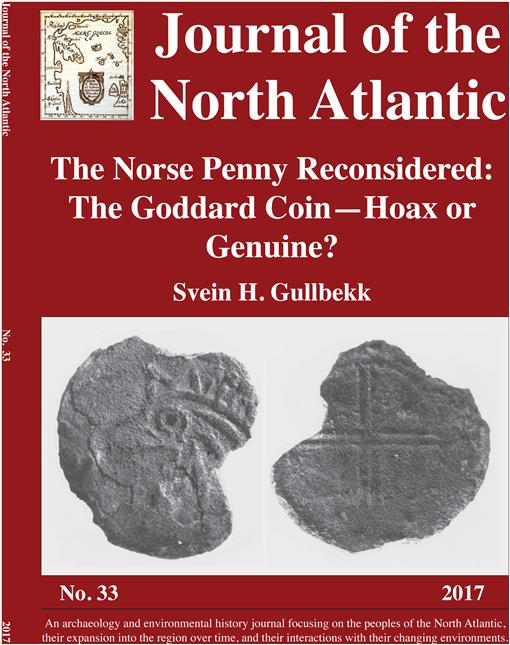The discovery of a Norwegian Viking penny on 18 August 1957, at Naskeag Point, the prehistoric Native American settlement close to Blue Hill Bay, Brooklin, Hancock County, ME, USA (also known as the “Goddard site”), has long been regarded as material evidence for contact between the continents and cultures of North America and Europe during the Viking Age. More recently, however, the veracity and validity of this find have been called into question. To this end, this article considers the penny's numismatic and archaeological context, and engages with the debate from a Norwegian perspective. There is little doubt that the coin is a genuine Viking penny, struck during the reign of Olaf the Peaceful (the epithet is Kyrre in Norwegian, 1067–1093); what is more complex, however, is whether the discovery constitutes a genuine find or an elaborate hoax. In assessing the evidence, this article considers the penny's appearance and its relationship to other Norwegian coin finds, both registered and unregistered, and within Norway and further afield. Accounting for the remarkable and exceptional nature of the find, this article concludes that both the penny and its modern archaeological and numismatic context offer plausible evidence that this find is genuine.
How to translate text using browser tools
1 January 2017
The Norse Penny Reconsidered: The Goddard Coin—Hoax or Genuine?
Svein H. Gullbekk
ACCESS THE FULL ARTICLE





